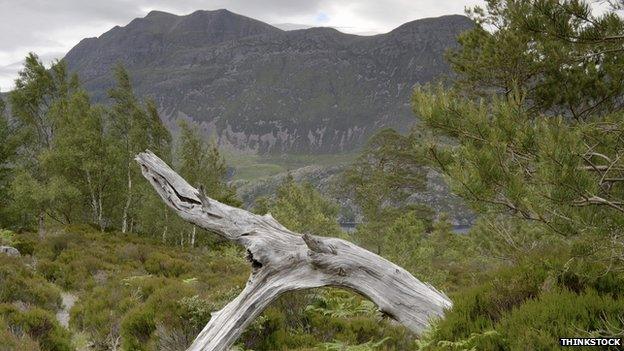Vole vault: Trove of facts on one of Britain's rarest mammals
- Published

Colonies of water voles have been confirmed in recent weeks in two different parts of the Highlands.
A new report commissioned by Scottish Natural Heritage, external has identified eight sites in Beinn Eighe National Nature Reserve in Torridon where the mammals are active.
Earlier this month, RSPB Scotland said water voles had been recorded in a part of the Highlands for the first time in 20 years.
The population was spotted at the charity's Insh Marshes reserve in Badenoch and Strathspey.
Following these reports by SNH and RSPB, here are five facts on water voles.

Water voles have been recorded at the Beinn Eighe National Nature Reserve
1. Water voles are the largest of Britain's voles. There are two other species - bank voles and field voles.
2. They usually have three or four litters a year with six babies in each litter. In Scotland, the litters have fewer young.
3. Scottish water voles are genetically distinct from those in the rest of the UK.
The voles that colonised England and Wales following the last Ice Age originated from South East Europe, according to SNH. Scotland's voles appear to be descended from animals that migrated from northern Iberia.
4. The water vole is one of Britain's most threatened native animals.
5. Non-native American mink, whose ancestors escaped from fur farms, have played a major part in wiping out colonies.
- Published25 September 2014

- Published2 September 2014
